#Ceratosauria
Photo
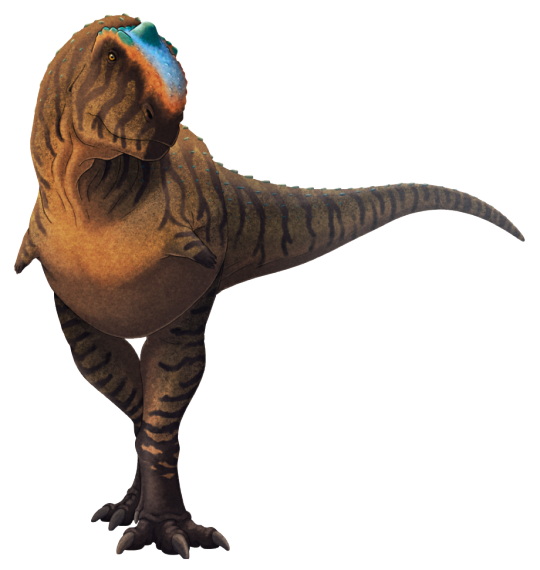
Abelisaurids were a group of theropod dinosaurs characterized by short snouts, bony ornamentation on their skulls, tiny stiff arms, and stocky legs. Known mostly from the southern continents of Gondwana, they were the dominant predators in these regions and are thought to have been specialized hunters of titanosaurian sauropods.
Rajasaurus narmadensis lived in what is now western India during the Late Cretaceous, about 67 million years ago. Around 7m long (23'), it had very rough-textured thickened bone on the top of its snout, along with a short rounded horn on its forehead that was probably used for display or headbutting behaviors.
India at this time was an isolated island continent located off the east coast of Africa, and Rajasaurus' ancestors probably island-hopped across from then-nearby Madagascar – where its closest known relative lived, the very similar-looking Majungasaurus.
———
Nix Illustration | Tumblr | Twitter | Patreon
#science illustration#paleontology#paleoart#palaeoblr#rajasaurus#abelisauridae#abelisaur#ceratosauria#theropod#dinosaur#art#unicorn#unconventional unicorns
574 notes
·
View notes
Text
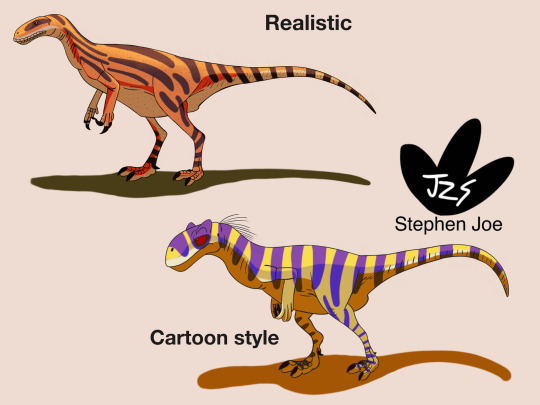
Day 9: Masiakasaurus
Time for me to do something fun where I haven’t done in the past before, realistic vs cartoon style.
#my art#dinosaur#paleoart#myart#dinosaurs#dinosauria#my drawings#masiakasaurus#dinocember#cartoon#noasauridae#ceratosauria#theropoda#sketchbookapp#sketchbook app#artists on tumblr
6 notes
·
View notes
Photo
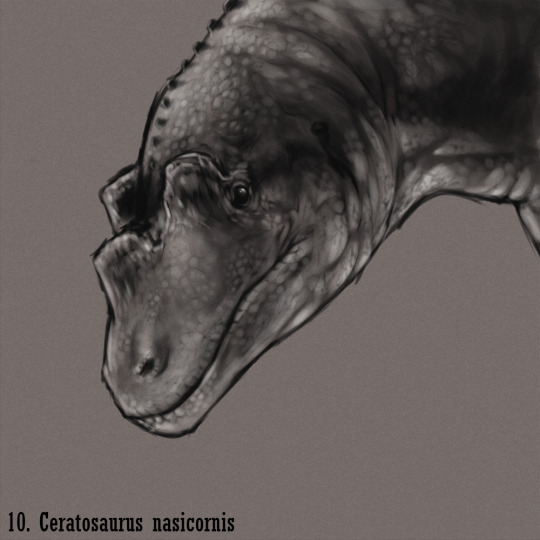
Day 10: Ceratosaurus nasicornis
#Ceratosaurus nasicornis#Ceratosaurus#paleoart#dinosaur#paleoblr#archovember#archovember2022#dinovember#dinovember2022#art#digital art#theropod#theropoda#ceratosauria#palaeoblr
30 notes
·
View notes
Text


#more dinosaurs#paleoart#theropods#ceratosauria#ceratopsian#idk what im drawing lol just figuring it out
26 notes
·
View notes
Text
Elemgasem nubilus Baiano et al., 2022 (new genus and species)

(Tail vertebrae of Elemgasem nubilus [scale bar = 50 mm], from Baiano et al., 2022)
Meaning of name: Elemgasem = Tehuelche deity with the power to petrify anyone (among other roles); nubilus = foggy days [in Latin, referring to the persistent fog present on some days during the expedition on which the original specimen was discovered]
Age: Late Cretaceous (Turonian–Coniacian)
Where found: Portezuelo Formation, Neuquén, Argentina
How much is known: Partial skeleton of one individual, including several vertebrae and parts of the hindlimb bones.
Notes: Elemgasem was an abelisaurid ceratosaur, making it a close relative of genera like Carnotaurus and Aucasaurus. Although numerous abelisaurid species are known from the Late Cretaceous of South America, Elemgasem is the first abelisaurid to be named from the Portezuelo Formation, and one of the few known from the Turonian–Coniacian interval.
Reference: Baiano, M.A., D. Pol, F. Bellardini, G.J. Windholz, I.A. Cerda, A.C. Garrido, and R.A. Coria. 2022. Elemgasem nubilus: a new brachyrostran abelisaurid (Theropoda, Ceratosauria) from the Portezuelo Formation (Upper Cretaceous) of Patagonia, Argentina. Papers in Palaeontology 8: e1462. doi: 10.1002/spp2.1462
28 notes
·
View notes
Text
Dinofact #51
Although they are, at first glance, very similar, a major difference between Ceratosaurs and Tyrannosaurids is the number of digits in the hand. While Tyrannosaurids were characterised by having only two functional fingers in each hand, Ceratosaurs notably kept all four.
Source: wikipedia [1], [2], [3]
#dinosaur#dinosaurs#paleontology#tyrannosaurid#tyrannosaurids#tyrannosauridae#ceratosaurids#ceratosaurs#ceratosaur#ceratosaurid#ceratosaurus#ceratosauria#theropods#theropod#theropoda#fun facts#trivia#dinosaur trivia#dinosaur fun facts#14th#october#2022#october 14th#october 2022#october 14th 2022
17 notes
·
View notes
Text
the beastly animal. the creature ,even
(genyodectes serus sketch)

10 notes
·
View notes
Photo

Hey!
It's been a while and I wanted to do something for the polyamory day and celebrate the new flag that the comunity had voted for, but I have been quite busy and haven't had time to think about what should I draw.
I know I’m late, but I still wanted to draw something and use the new colors of the flag.
So here is my favorite dinosaur with the colors of the polyamory flag.
I must say I’m really happy with the new flag that people chose, it was my second favorite from options we had.
#polyamory#polyamory day#polygamy#lgbt#community#dinosaur#styracosaurus#ceratosauria#heart#love#relationship#favorite#winner#poly#dino#colors#new colors#new#art#digital#design#creature#animal#lizard#big lizard
3 notes
·
View notes
Text
Carnotaurus sastrei sculpture
I've wanted to make a post about this sculpture's process, so I will take advantage of how Tumblr works to show photos of the phases and my experience using Milliput for the first time.
Unfortunately, I don't have photos of the exact beginning, but here's an image from a story I posted on Instagram. You can see that the sculpture is at a very early stage and is a general volume of what would later become the final figure, the whole inner part is made with aluminum foil, cardboard, and painter's tape, while the first outer layer is made with cold porcelain.
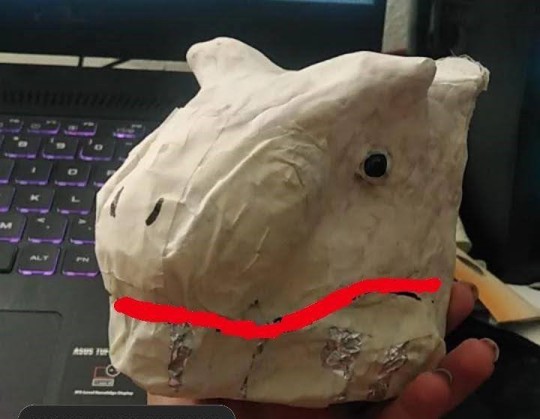
Once the bust was covered with cold porcelain and it had dried I could start sculpting the first details using Milliput, an epoxy mass that gives you 3 to 4 hours to sculpt and the truth is that I was pleasantly surprised because it allows it to work very well small details and is very easy to handle, the only thing I should have taken more into account is that once dry the Milliput gives a lot of weight to the figure.
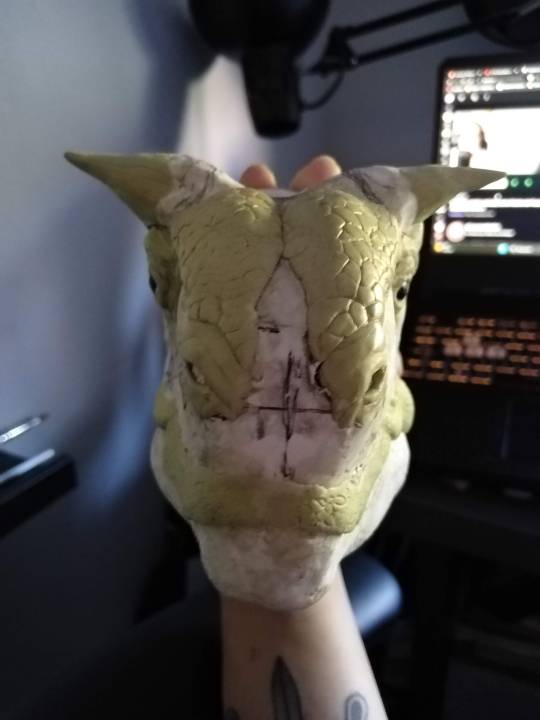

In this first phase of detailing I focused on working in those areas that were going to require more time due to the type of texture of each one. For example, in the eyes, there are a lot of folds and wrinkles, in the horns I wanted to achieve the growth of the keratin.
For the next phase, the whole part of the skin of the face, I was guided by the images of the study of the scales of the Carnotaurus of 2021_ The scaly skin of the abelisaurid Carnotaurus sastrei (Theropoda: Ceratosauria) from the Upper Cretaceous of Patagonia.
I also used them as a reference for the paleoart scales that in my opinion showed me very well or at least gave me an idea of how I could work the skin of my bust. For example one of my mains references while doing this sculpture was the art of Fred Wierum


Now how I've tried to apply what I search about the scales.

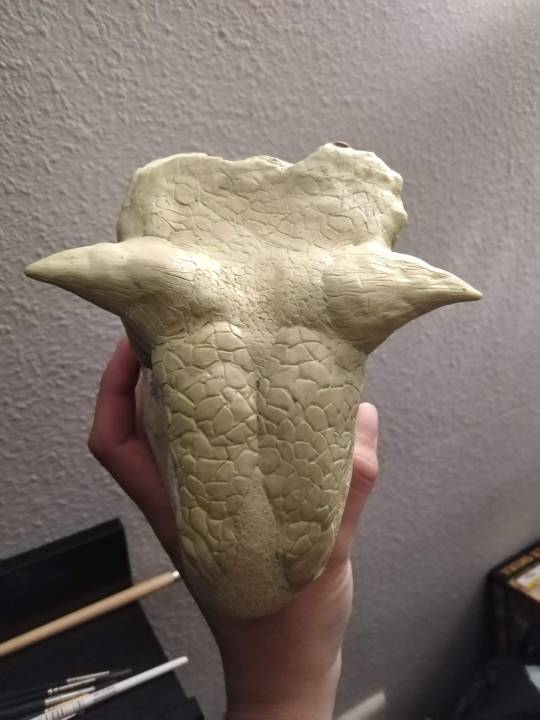
At first I was not sure if I was going to make a neck, but as I progressed with the sculpture I could see that I was going to need the neck to give it more shape and put it on a good base.
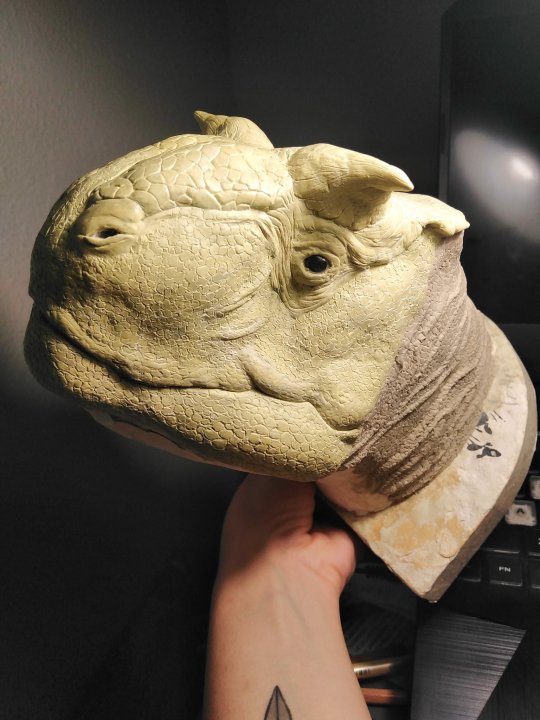
With all the sculpting part done It was time to prime the dino!

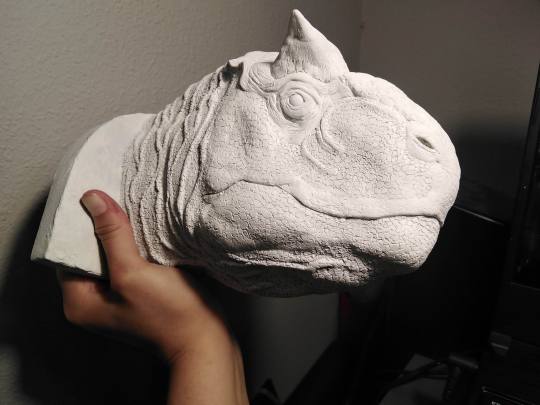
For the painting part of the bust I wanted to try to get away from the red and yellow that is usually painted, so I decided to do some research on the types of lizards that live in Argentina and see if any of them had a pattern and colors that would fit what I was looking for. In the end I discovered Fitzinger's tree iguana, an animal with very nice colors and pattern that moved away from the reds and mixed greens with oranges and blues.
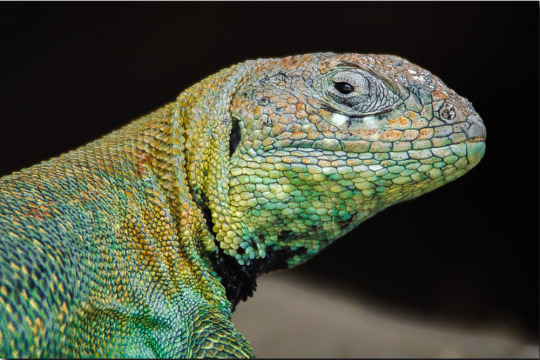
Photo credit: Roman Montero
And finally, the complete sculpture!
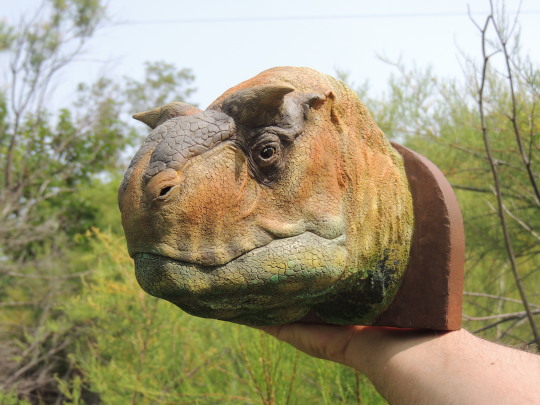

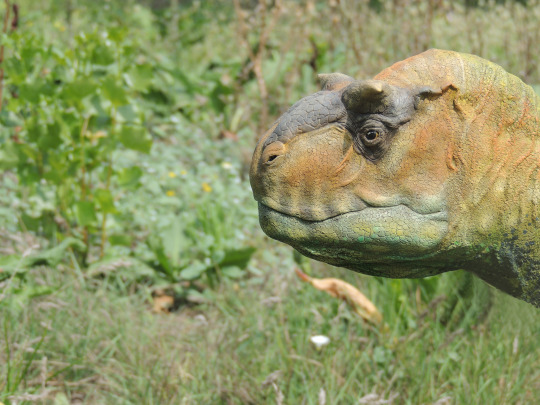
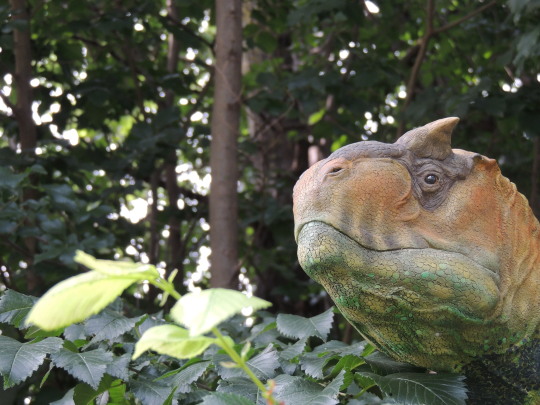
So here it is, I am very happy with this bust and the learning process I have gone through to make it as correct as possible.
Hope you like it!
#art#animals#dinosaur#paleomedia#paleoart#science#carnotaurus#sculpture#milliput#paleontology#argentina
231 notes
·
View notes
Text


#Archovember Day 10 - Ceratosaurus nasicornis
Type species of the Ceratosauria, Ceratosaurus nasicornis was a medium-sized predator from Late Jurassic North America. It was characterized by deep jaws and 3 prominent horns on its head. It also had a ridge of small osteoderms down it’s back, as well as elsewhere across its skin.
Late Jurassic North America seemed to be ruled by a trifecta of theropod apex predators: Torvosaurus, Allosaurus, and Ceratosaurus. There have been multiple studies on how these predators could have coexisted without direct competition, but it was likely due to niche partitioning. Ceratosaurus could have preferred different prey items, and even different parts of a carcass when scavenging. Ceratosaurus had thin, elongated teeth in comparison to the other theropods, and could have even hunted semi-aquatic prey like lungfish, crocodiles, and turtles.
The Morrison Formation is well-known for the sauropods that dominated the region. These include Apatosaurus, Brachiosaurus, Camarasaurus, and Diplodocus. There were also small theropods like Ornitholestes, and ornithischians like Camptosaurus, Dryosaurus, Nanosaurus, the ankylosaur Gargoyleosaurus, and Stegosaurus. There were both aquatic and terrestrial crocodylomorphs like Hoplosuchus, and pterosaurs such as Harpactognathus and Mesadactylus. Ceratosaurus and related species of most of the Morrison Formation’s fauna have also been found in the Lourinhã Formation of Portugal, along with the sauropods Dinheirosaurus and Zby, and the stegosaur Miragaia.
#you can tell I don’t really have much to say about the species when I start talking about ecology lol#Ceratosaurus is still very cool and no matter how much we learn about it it always seems very retro to me#my art#Ceratosaurus#Ceratosaurus nasicornis#Ceratosaurs#theropods#saurischians#dinosaurs#archosaurs#archosauromorphs#Archovember#Archovember2022#drawdinovember#DrawDinovember2022#Dinovember2022#Dinovember#SaritaDrawsPalaeo
87 notes
·
View notes
Text
THE ONE AND ONLY OTHNIEL CHARLES MARSH

For Throwback Thursday we will be discussing one of the most important people in paleontology: Professor Othniel Marsh. He was born in Lockport, New York to a modest family but he was lucky enough to be the nephew of George Peabody.

Peabody paid for his formal education at Yale College where he received a bachelor's degree in...art?

He did receive a Berkeley Scholarship so he went on to study geology, mineralogy, and chemistry.

Fun fact, in 1866 he was appointed the professor of vertebrate paleontology at Yale University making him the very first professor of paleontology in the U.S.

The Peabody Museum of Natural History was founded and he was made one of the first curators.

Marsh went on to write 400 scientific papers, naming about 500 new species of fossil animals including many of our Morrison favorites:
Stegosaurus

Brontosaurus

Apatosaurus
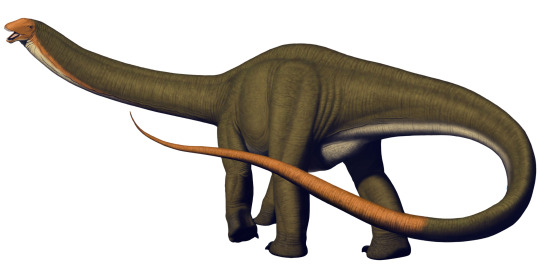
Allosaurus

Atlantosaurus

Camptosaurus

Ceratosaurus

Diplodocus

Dryosaurus

and Nanosaurus.
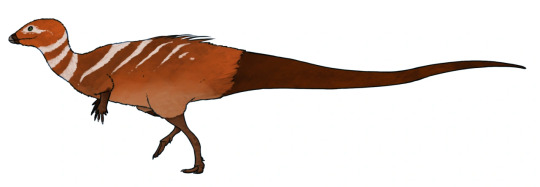
He also named several of their families: Allosauridae, Camptosauridae, Diplodocidae, and Stegosauridae as well as four famous suborders: Ceratopsia, Ceratosauria, Ornithopoda, Stegosauria and Theropoda.
He also had several named in his honor but only Marshosaurus has stood the test of time.

#paleontology#dinosaur#fossils#geology#allosaurus#Othniel Charles Marsh#stegosaurus#diplodocus#apatosaurus#ceratosaurus#dryosaurus#brontosaurus#bone wars#george peabody#yale university#yale peabody museum of natural history
15 notes
·
View notes
Note
What kind of theropod you Disaster wyvern from MHO is? I have him as a Ceratosauria due to looking like an odd brachydios relative
That’s what I thought too initially but I ran into a problem

I think it has 5 fingers
Ceratosaurs have 4 fingers max, which would have to put this guy farther back on the theropod tree. I could just say it has polydactyly like Odogaron, later ichthyosaurs, or even my theory for why pseudowyverns have a stubby extra thumb.
I guess if it is a brachy line ceratosaur then maybe disaster wyverns don’t use their hands unlike brachydios so maybe they don’t have any pressure to keep normal hands?
Also this is ignoring that archosaurs don’t have claws on the 4th and 5th digits of their hands, because Capcom doesn’t seem to know that.
9 notes
·
View notes
Text
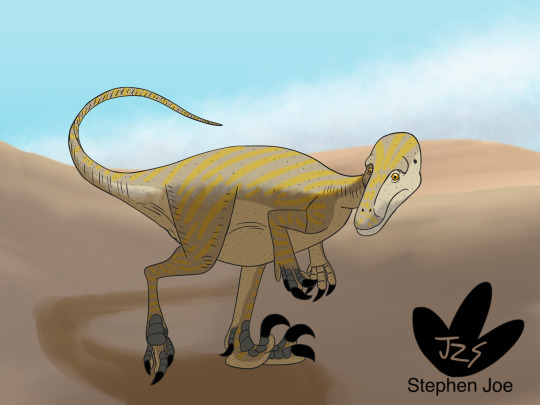
The last day of dinocember 2023 is day 15: Vespersaurus.
A another and bizarre noasauridae with a two sickle claw-like toes sticking out from its foot, while standing on a sandy dunes.
#my art#dinosaur#paleoart#myart#dinosaurs#dinosauria#my drawings#vespersaurus#noasauridae#ceratosauria#theropoda#sketchbookapp#sketchbook app#artists on tumblr#dinocember
5 notes
·
View notes
Text
Me remembering different major dinosaur clads so I can give Blue Moon a dino
Dromaeosaurids- feathers: Yes. Common known dinos: microraptor, velociraptor, utahraptor. -I like to define them as: rectangle mouth, clawed, robust bird like.
Troodontids- feathers yes. Common known dinos. Saurornithoides, Sinovenator, Mei long. I like to find them as: smaller, Bird like mouthed, intelligent dromosaurus.
ornithomimosaurs- feathers yes. Common known dinos. Deinocheirus, gallimimus, Ornithomimus. I like to describe them as. Ostrich like, fast, sometimes humped back, birds.
therizinosauria-
oviraptorosaurs
Tyrannosaurus
dilophosaurids
ceratosauria
megalosaurids
spinosaurids
carnosaurs
My brain is starting to die. I'll put in most of the herbivores later.
5 notes
·
View notes
Text

heres a Gasurabazura skull i made with 3D model and Ceratosauria skulls for references!
Gasura is a weird theropod to classify as he seems to be an abelisaurid but due to his longer arms it makes me think that its a Ceratosauria, the outward facing teeth also makes me think that hes a large Noasaurid but idk!
His teeth seems to be more specialized for catching small prey animals which would make sense as from what i know from the frontier lore it hunts the small scorpions Kusubami!
as for my thoughts on Gasura hes decent for a frontier monster, his design is funky lookin and has an ok fight.
8 notes
·
View notes
Text
Berthasaura leopoldinae de Souza et al., 2021 (new genus and species)
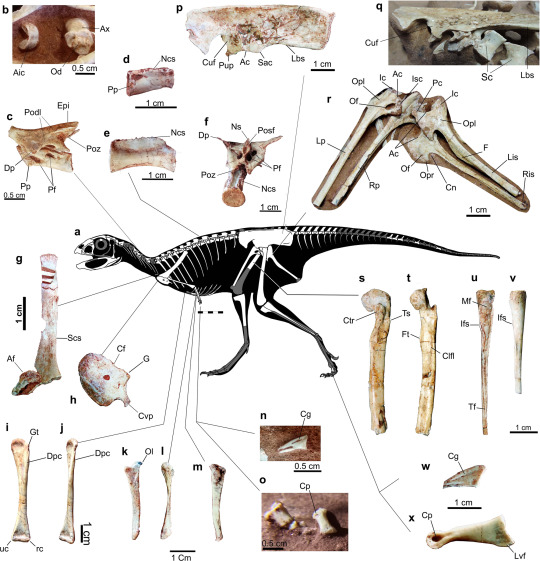
(Select bones and schematic skeletal of Berthasaura leopoldinae, with preserved bones in white, from de Souza et al., 2021)
Meaning of name: Berthasaura = [Brazilian zoologist and politician who was a leading figure during the Pan American feminist movement] Bertha Maria Júlia Lutz’s lizard; leopoldinae = for Maria Leopoldina [the first Empress of Brazil] and Imperatriz Leopoldinense [a samba school that developed a theme to commemorate the National Museum of Brazil]
Age: Early Cretaceous (Aptian–Albian)
Where found: Goio Erê Formation, Paraná, Brazil
How much is known: Nearly complete skeleton of one individual.
Notes: Berthasaura was a small ceratosaurian theropod, less than a meter long in total body length. To be fair, the only known specimen was probably not fully grown. Based on comparison to other ceratosaurs with more completely known growth series, however, it was likely not an early juvenile individual either.
Whereas most other ceratosaurs were sharp-toothed predators, Berthasaura was extremely unusual in having toothless jaws, and it may have instead been an herbivore or an omnivore. The only other toothless ceratosaur named previously was Limusaurus from the Late Jurassic of China. Interestingly, the describers of Berthasaura found that it was probably not especially closely related to Limusaurus. If this is correct, ceratosaurs evolved into toothless forms at least two separate times in their evolutionary history.
Although Limusaurus was a toothless herbivore as an adult, it had sharp teeth as a juvenile. If Berthasaura also went through this process, it might have lost its teeth at an earlier growth stage than Limusaurus did, given the immaturity of the type specimen. However, it is also possible that it was toothless throughout its life. Without additional fossils of Berthasaura at other growth stages, it is hard to be sure.

(Type specimen of Berthasaura leopoldinae, from de Souza et al., 2021)
Reference: de Souza, G.A., M.B. Soares, L.C. Weinschütz, E. Wilner, R.T. Lopes, O.M.O. de Araújo, and A.W.A. Kellner. 2021. The first edentulous ceratosaur from South America. Scientific Reports 11: 22281. doi: 10.1038/s41598-021-01312-4
170 notes
·
View notes